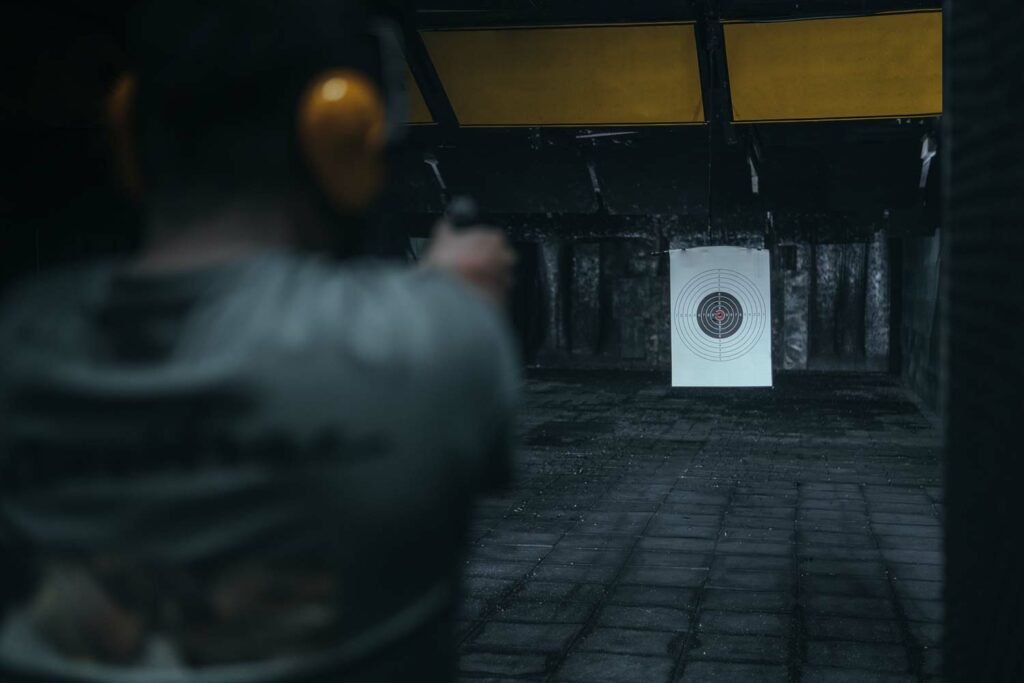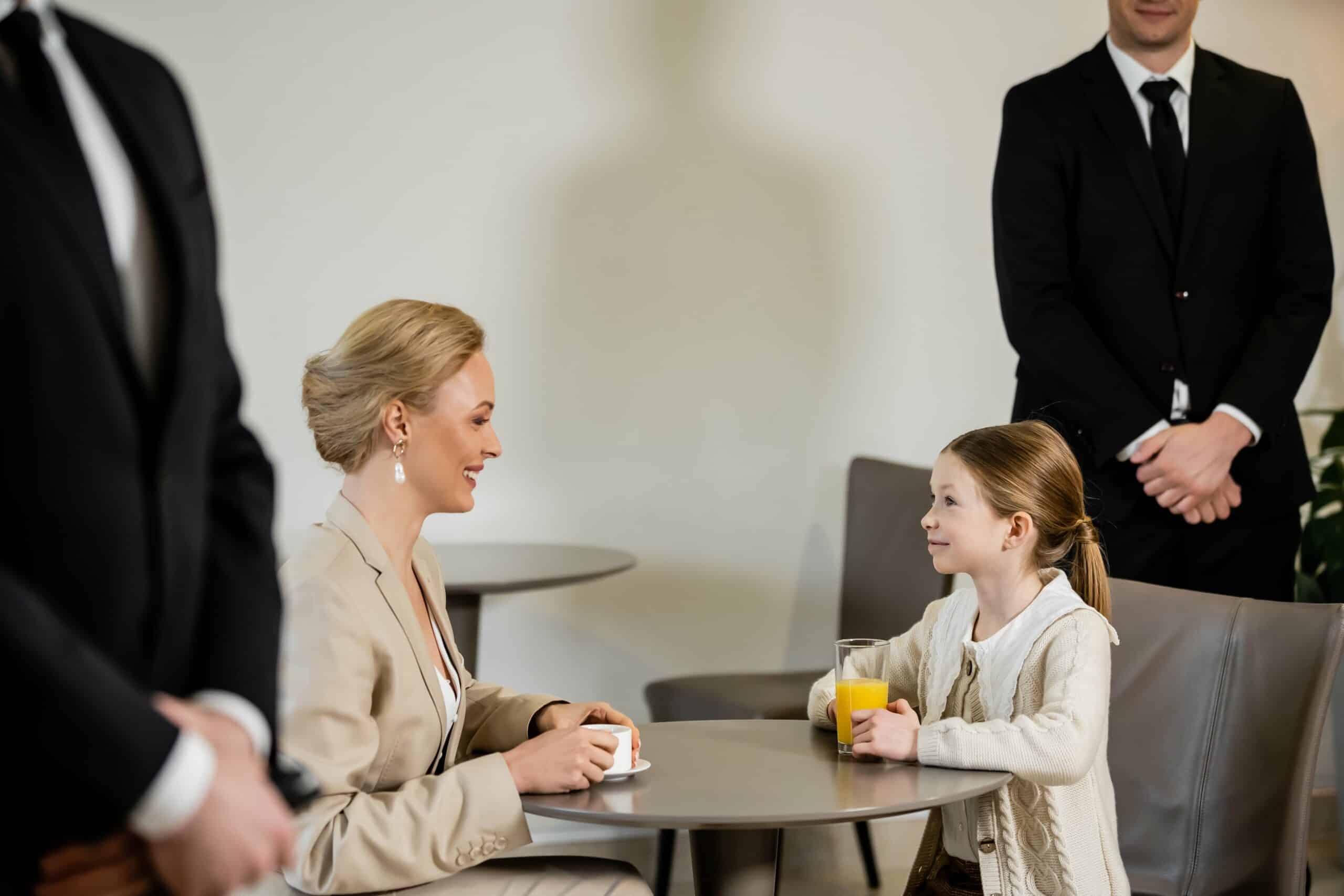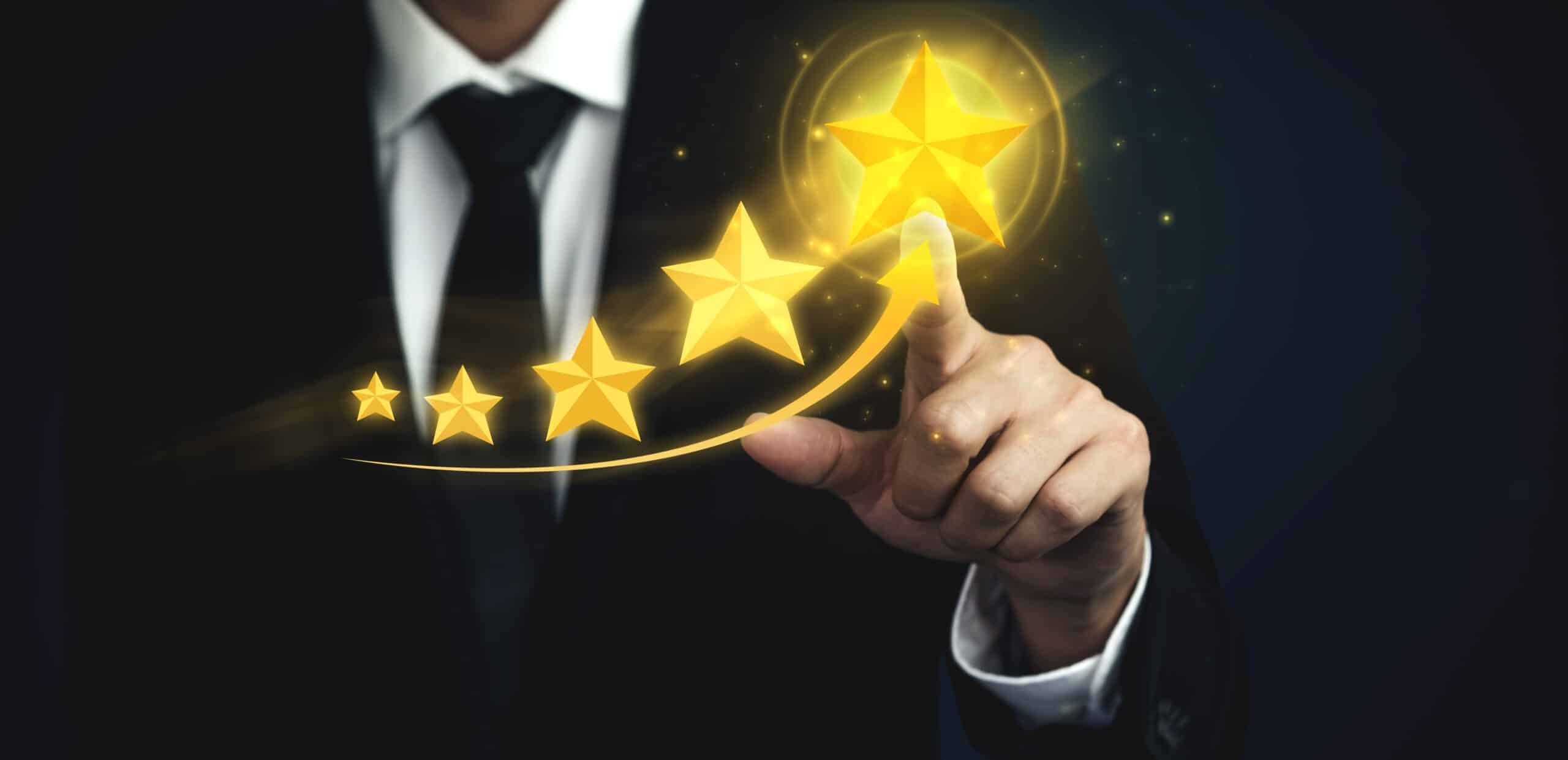Estimated reading time: 13 minutes
In the intricate web of today’s global business environment, the security of key personnel is not just a matter of personal safety; it’s an imperative component of corporate strategy. As threats evolve in complexity and sophistication, executive security solutions must advance in parallel. This article delves into the multifaceted realm of executive protection, dissecting advanced methodologies and technologies designed to shield individuals who steer the helm of modern enterprises. From preemptive threat assessment to crisis management, the protective measures outlined here are structured to ensure the safety of high-profile executives.
Table of contents
- Foundations of Executive Security: Risk Assessment and Planning
- Advanced Security Technologies: Enhancing Protection through Innovation
- Proactive Threat Management: Strategies and Response
- The Human Factor: Training and Expertise in Executive Security Teams
- Secure Mobility: Transportation and Travel Security for Executives
- Cybersecurity and Information Protection for Executives
- Comprehensive Event Security for High-Profile Engagements
- Long-Term Security Strategy: Building a Sustainable Protective Ecosystem
- Conclusion
Foundations of Executive Security: Risk Assessment and Planning
Identifying and Analyzing Potential Threats
In executive security, recognizing and understanding potential threats is the first defense line. This process goes beyond surface-level evaluations, delving deep into a thorough analysis of an individual’s risk profile. Security experts consider various factors, including the executive’s public exposure, travel patterns, and personal lifestyle. Security teams can pinpoint vulnerabilities and predict potential threats by examining these elements. This proactive approach enables the security detail to anticipate risks and prepare accordingly, ensuring that protective measures are precise and preemptive.
Crafting a Customized Security Blueprint
Once potential threats have been identified and assessed, the next step is devising a security plan tailored to the individual’s needs. This plan is not a one-size-fits-all solution but a dynamic framework that adapts to the executive’s unique profile. Security experts collaborate closely with the individual, integrating their preferences and requirements into the plan. This collaboration ensures that the security measures are practical and align with the executive’s lifestyle, minimizing disruption while maximizing protection. The blueprint encompasses various security aspects, from travel logistics to emergency response protocols, forming a comprehensive shield around the individual.
Implementing Advanced Surveillance and Intelligence Gathering
In executive security, knowledge is power. Advanced surveillance and intelligence gathering are pivotal in maintaining a protective edge. Security teams employ various tools and techniques to monitor the environment and gather actionable intelligence. This may include cyber surveillance to safeguard digital assets, physical surveillance to secure premises and routes, and even social media monitoring to detect potential threats. Intelligence gathered through these means is analyzed, ensuring the security measures are based on real-time information and insights. This dynamic approach allows security teams to stay one step ahead, adapting their strategies as new threats emerge and circumstances change.
Advanced Security Technologies: Enhancing Protection through Innovation
Cutting-Edge Surveillance Systems
In executive security, leveraging the latest surveillance technologies is not just an option but a necessity. Modern surveillance systems surpass essential camera networks, incorporating advanced features such as facial recognition, license plate reading, and predictive analytics. These systems are designed to provide a seamless, 360-degree view of the security landscape, ensuring no blind spots or vulnerabilities are left unchecked. Integrating AI and machine learning further enhances these systems, enabling them to monitor, analyze, and predict potential security breaches. This proactive stance ensures that threats can be identified and neutralized swiftly, often before they materialize into actual risks.
Secure Communication Channels
In today’s digital age, the importance of secure communication cannot be overstated, especially for executives who often deal with sensitive information. Secure communication channels are essential to prevent eavesdropping, data breaches, and other cyber threats. Technologies such as end-to-end encryption ensure that only the intended recipients can read the message content. Beyond encryption, measures like secure VPNs, self-destructing messages, and advanced authentication protocols add extra layers of security. These technologies safeguard against a broad spectrum of threats, from sophisticated cyber-attacks to internal leaks, ensuring that confidential communications remain private and secure.
Biometric Security Measures
Biometric security measures represent the pinnacle of personalized security solutions. By using unique physical characteristics such as fingerprints, facial features, or iris patterns, biometric systems offer a level of security that is extremely difficult to breach. These systems are employed in various aspects of executive security, from access control to data protection. The advantage of biometrics lies in its combination of high security with ease of use. Unlike passwords or keycards, biometric data cannot be easily stolen or replicated, making unauthorized access nearly impossible. Furthermore, biometrics streamlines security procedures, allowing swift yet secure access to facilities, devices, and information.
Proactive Threat Management: Strategies and Response
Continuous Risk Monitoring and Assessment
In the high-stakes realm of executive protection, the landscape of threats is neither static nor predictable. Continuous risk monitoring and assessment form the backbone of a proactive threat management strategy. This dynamic process involves constant vigilance, with security teams employing technological and human intelligence sources to monitor potential risks. The aim is to respond to threats and anticipate and neutralize them before they materialize. This requires a deep understanding of the evolving nature of risks, be they physical, digital, or reputational. By maintaining a pulse on the global threat environment, security teams can adapt their protective measures in real-time, ensuring the executive’s safety remains uncompromised.
Crisis Management and Emergency Response
Despite the most meticulous planning and prevention strategies, crises can still occur. Therefore, an effective executive security protocol includes a robust crisis management and emergency response plan. This plan outlines clear procedures and roles for responding to various scenarios, ensuring that every security team member knows precisely what to do in an emergency. The key to successful crisis management lies in preparation, coordination, and speed. Regular drills and simulations are crucial to prepare the team for real-life scenarios, ensuring a swift and coordinated response when every second counts. Moreover, the plan is regularly reviewed and updated to adapt to new threats and changes in the executive’s profile or routine.
Collaboration with Law Enforcement and Security Agencies
In managing threats to high-profile executives, collaboration with law enforcement and specialized security agencies is not just beneficial; it’s imperative. These partnerships provide access to a broader network of resources, intelligence, and expertise, enhancing the effectiveness of the executive’s security detail. Security teams work closely with local and international agencies to ensure their protective measures align with broader security operations, especially when the executive travels or attends high-profile events. This collaborative approach ensures comprehensive security coverage, leveraging the strengths and capabilities of various agencies to create a multilayered protective shield around the executive.
The Human Factor: Training and Expertise in Executive Security Teams

Rigorous Training Regimens for Security Personnel
The proficiency of an executive security team hinges significantly on the depth and breadth of their training. Rigorous training regimens are pivotal, encompassing physical conditioning and combat readiness, situational awareness, emergency medical response, and advanced driving skills. These programs prepare security personnel for various scenarios, ensuring they can respond effectively under pressure. Moreover, continuous training is a norm in this field, with teams regularly updating their skills to keep pace with the latest security tactics and technologies. This relentless pursuit of excellence ensures that the executive is protected by individuals who are not just guards but highly skilled security professionals.
Specialized Skills and Backgrounds of Security Agents
The composition of an executive security team often reflects a diverse array of specialized skills and backgrounds. Many team members come from law enforcement, military, or intelligence agencies, bringing experience in high-pressure situations. Others may specialize in cybersecurity, counter-surveillance, or behavioral analysis. This diversity is a strategic asset, enabling the team to approach security from multiple angles and anticipate various threats. The varied skill set within the team ensures a comprehensive protection strategy where an expert in that domain addresses every potential vulnerability.
Emphasis on Discretion and Professionalism
In executive security, discretion and professionalism are as vital as physical protection. Security personnel are often privy to sensitive information and find themselves in scenarios where tact and diplomacy are crucial. As such, they are trained in security protocols and the nuances of corporate etiquette and confidential information handling. The ability to blend into the executive’s environment, maintaining a low profile while providing unwavering protection, is a hallmark of a top-tier security team. This balance between vigilance and discretion ensures that the executive can conduct their business without unnecessary intrusion or disruption, safe in the knowledge that their security is in expert hands.
Secure Mobility: Transportation and Travel Security for Executives
Advanced Protective Measures in Executive Transport
Transportation is often one of the most vulnerable aspects of executive security, necessitating advanced protective measures. Vehicles used for executive transport are not just modes of conveyance but fortified mobile sanctuaries. These vehicles are commonly equipped with armor plating, bulletproof glass, and other defensive features designed to withstand attacks. In addition to physical fortifications, vehicles are often outfitted with advanced communication systems, ensuring constant contact with the security team and emergency services. The drivers of these vehicles are not just chauffeurs but highly trained security professionals, adept in defensive driving techniques and emergency evasion protocols, ensuring the executive’s journey is as secure as it is seamless.
Coordinating Secure Travel Itineraries
When it comes to executive travel, especially across borders, meticulous coordination is critical to ensuring safety. Security teams conduct thorough pre-travel reconnaissance, assessing the security landscape of the destination, including potential threats and safe havens. Routes are carefully planned and often rehearsed, with contingencies in place for emergencies. Accommodations, meeting venues, and public appearances are scrutinized for vulnerabilities, with protective measures tailored to each scenario. This level of detailed planning ensures that their security envelope remains intact no matter where the executive travels, providing peace of mind and allowing them to focus on their business objectives.
Integration of Local Security Resources
In international travel scenarios, leveraging local security resources is crucial for comprehensive protection. Security teams often liaise with local law enforcement and private security firms to augment their capabilities. This collaboration ensures a seamless security operation, with local experts providing valuable insights into the regional threat landscape and cultural nuances. Local partnerships can also facilitate quicker response times in emergencies and access to resources that may be otherwise unavailable. By integrating local security resources into the executive protection strategy, security teams can create a robust, multilayered defense that adapts to the unique challenges of each location.
Cybersecurity and Information Protection for Executives
Shielding Digital Assets from Cyber Threats
In an era where digital assets are as critical as physical ones, ensuring the cybersecurity of executives is paramount. Cyber threats range from data breaches and phishing scams to sophisticated espionage tactics to extract sensitive corporate information. Security teams employ a multi-faceted strategy to protect digital assets. This includes robust firewalls, intrusion detection systems, and regular security audits to identify and mitigate vulnerabilities. Additionally, advanced encryption methods are used for data at rest and in transit, ensuring that even if data is intercepted, it remains undecipherable to unauthorized parties. Regular training sessions are also conducted for executives, making them aware of the potential cyber threats and best practices to mitigate them, such as recognizing phishing attempts and using strong, unique passwords for different services.
Safeguarding Communication and Maintaining Privacy
For executives, every communication, whether via email, phone, or video conferencing, could expose sensitive information if not properly secured. End-to-end encryption is a standard practice for securing these communication channels, ensuring that only the intended recipients can access the message. Beyond encryption, measures like secure private networks and dedicated, secure devices for executive use are employed to maintain privacy and security. Policies and protocols are also implemented to manage and monitor access to sensitive information, ensuring that only authorized personnel can access critical data. Regular audits and monitoring ensure that unauthorized access or communication is quickly identified and addressed.
Proactive Measures Against Insider Threats
While external cyber threats are a significant concern, insider threats—intentional or accidental—pose an equally severe risk to executives. Technology, policies, and culture are employed to combat this. Access to sensitive information is strictly controlled and monitored, with privileges granted on a need-to-know basis. Regular security training and awareness programs ensure that employees know the potential risks and the importance of following security protocols. Advanced monitoring systems also detect any unusual activity that could indicate a possible insider threat. In cases where insider threats are detected, swift and decisive action is taken to mitigate the risk and ensure that the executive’s information remains secure.
Comprehensive Event Security for High-Profile Engagements
Meticulous Planning and Coordination of Event Security
High-profile events, whether corporate gatherings, public appearances, or private meetings, require meticulous and all-encompassing security planning. The process begins well before the event, with security teams conducting thorough assessments of the venue, identifying potential security risks, and devising strategies to mitigate them. Coordination with event organizers, local authorities, and private security firms is essential to ensure that all security aspects are harmonized and no detail is overlooked. This includes everything from crowd control and access management to emergency evacuation plans. The objective is to create a secure environment that welcomes attendees and is impermeable to potential threats.
Advanced Security Protocols During the Event
During the event, advanced security protocols are in full swing, ensuring the safety and security of the executive and attendees. Surveillance systems monitor the event in real-time, providing security teams with a comprehensive venue view. Security personnel are strategically positioned throughout the venue, blending in with the environment while maintaining a vigilant watch. Screening procedures for attendees, including metal detectors and bag checks, are implemented discretely yet effectively, preventing unauthorized or dangerous items from entering the venue. Communication between security team members is constant and covert, ensuring any potential issue can be addressed swiftly without causing alarm or disrupting the event.
Post-Event Analysis and Continuous Improvement
The conclusion of the event doesn’t signify the end of security responsibilities. A thorough post-event analysis is conducted to assess the security measures’ effectiveness. This involves debriefing sessions with security personnel, reviewing surveillance footage, and gathering feedback from event organizers and attendees. The insights gained from this analysis are invaluable, highlighting strengths to be maintained and identifying areas for improvement. This continuous evaluation and adaptation process ensures that each event is not just a standalone operation but a learning opportunity, contributing to the refinement and enhancement of security strategies for future engagements.
Long-Term Security Strategy: Building a Sustainable Protective Ecosystem
Developing a Resilient Security Culture within Organizations
Establishing a resilient security culture within an organization is paramount for the long-term safety of executives and the company. This involves fostering an environment where security is everyone’s responsibility, not just the concern of the security team. Regular training and awareness programs are essential, ensuring that employees at all levels understand the potential threats and how their actions can contribute to the organization’s security posture. Policies and protocols should be clear, accessible, and enforced, promoting behaviors reinforcing security, such as reporting suspicious activities and adhering to access controls. By ingraining security into the corporate culture, organizations can create a vigilant, proactive workforce that acts as an additional layer of defense in the protective ecosystem.
Leveraging Technological Innovations for Enhanced Security
Staying ahead requires leveraging the latest technological innovations in the fast-evolving landscape of threats. Organizations should proactively adopt new security technologies that offer superior protection and efficiency. This includes advanced surveillance and cyber defense mechanisms and data analytics tools capable of predicting potential threats based on patterns and anomalies. However, technology alone is not a panacea. It must be integrated thoughtfully into the overall security strategy, complementing the human elements of vigilance and intuition. Regular assessments and updates are crucial, ensuring the technological arsenal remains cutting-edge and capable of countering the latest threats.
Establishing Robust Protocols for Continual Improvement and Adaptation
In executive security, complacency can be the most significant vulnerability. Therefore, establishing robust protocols for continual improvement and adaptation is critical. This involves regular reviews and updates of security plans, considering the evolving threat landscape, and feedback from security operations and drills. Scenario planning and simulations are crucial in preparing security teams for a wide range of potential situations and ensuring that responses are swift and effective. Collaboration with external experts and agencies can provide fresh perspectives and insights, further enriching the security strategy. By committing to a constant evaluation, learning, and adaptation cycle, organizations can ensure that their security measures are reactive and proactively aligned with the ever-changing contours of risk.
Conclusion
In conclusion, executive security is an art as much as a science. This discipline blends the precision of technology with the intuition of human experience, all aimed at one ultimate goal: creating a protective ecosystem where business can proceed unimpeded and where the safety of key personnel is upheld as a paramount priority. It’s a relentless pursuit, demanding constant refinement and unwavering dedication, but indispensable in nurturing the growth, innovation, and leadership that drive our corporate landscapes forward.












